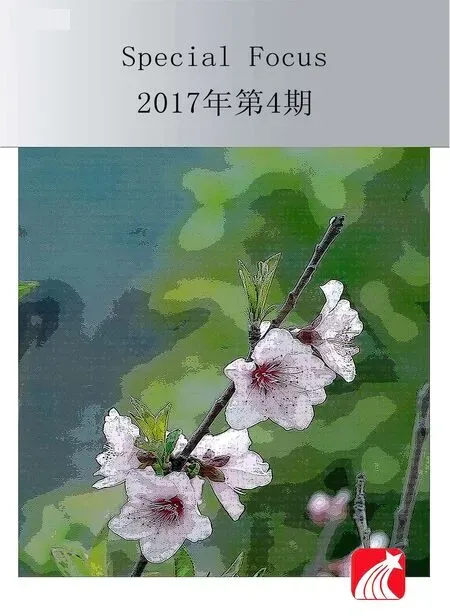第三章:天下茶倉在漢口
第三章:天下茶倉在漢口
Chapter 3: Hankou, China’s Great Tea Storehouse
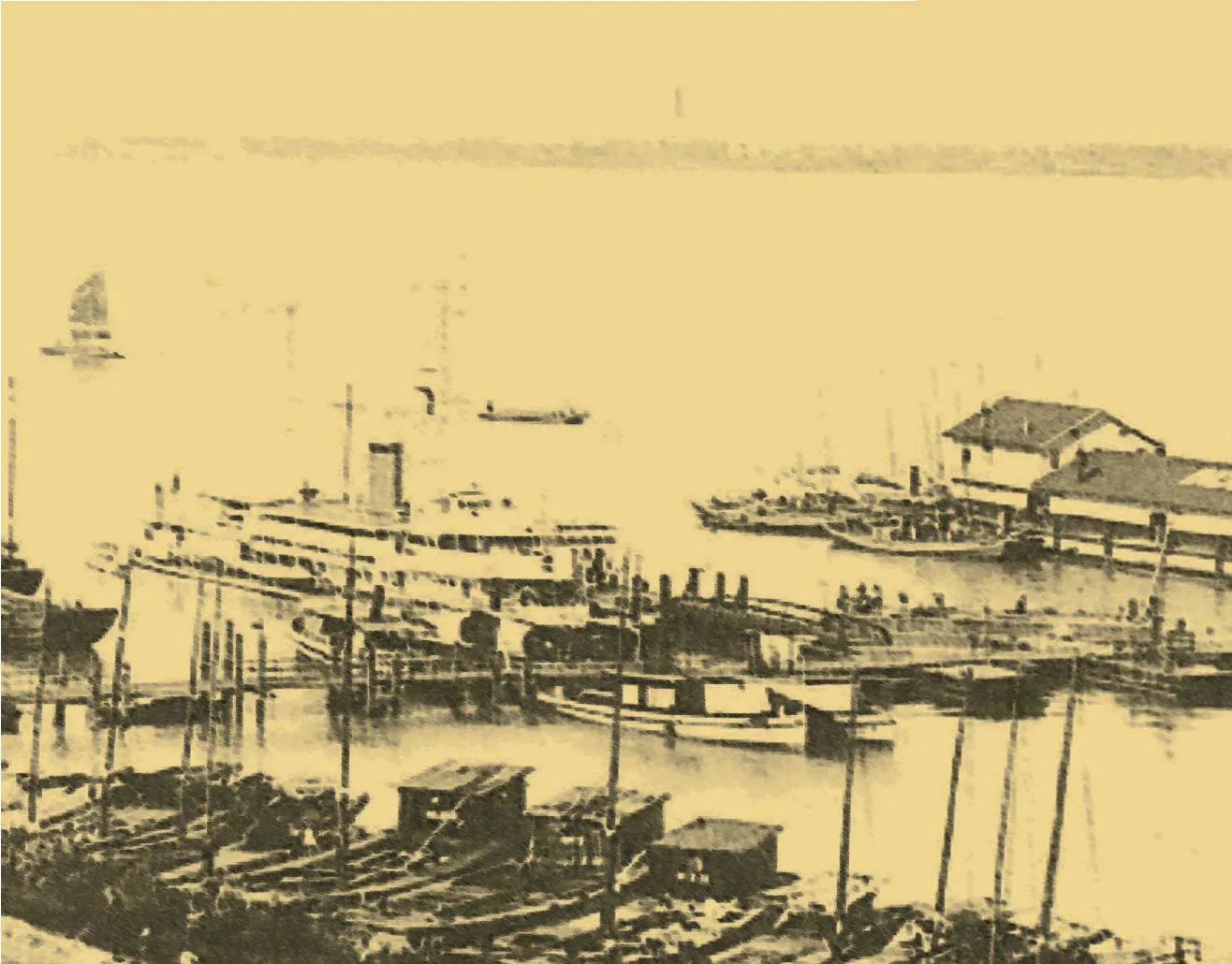
清晨,太陽剛露出魚肚白,江面在朦朧的迷霧中漸漸醒來。遠處,時不時有悠揚的汽笛聲傳入耳畔。一群被叫做“扁擔”的人早已在碼頭等候多時,只等貨船靠岸,便有序地將一擔擔貨物運至船艙、碼放整齊。待所有貨物裝載完畢,一聲笛響,貨船便滿載著貨物漸漸遠去。“扁擔”們目送貨船離開,同時也迎接著下一艘的到來……因為,這是他們得以養活全家的生計。
這是19世紀,漢口碼頭的繁忙景象。漢口是明清重鎮,商業發達,碼頭眾多。商人中間流傳著這樣幾句話:“要做生意你莫愁,拿好本錢備小舟。順著漢水往下走,生意興隆算漢口。”
Early morning, the sun’s first twilight rays have just broken through the blackness of night, the soft white mist hanging over the lazy river’s surface has just begun to stir. From time to time, the sweet melodies of a wood flute wafts with the riverside breeze. A group of people called“polebearers” have long been waiting on the wharf for the cargo ship to dock or transport goods to the ship’s cabin in a neat and orderly fashion.
When all the goods are loaded, a whistle rings out shrilly piercing the morning air, the fully-loaded cargo ship carries the goods away and gradually disappears in the distance behind a foggy shroud. The “polebearers” watch the ship as it leaves, and then greet the arrival of the next ship. They scurry back and forth loading the cargo with great enthusiasm, as their next meal and in fact, their whole family’s next meal depends on it.
The afore described is a bustling scene of the Hankou pier in the 19th century astir with life. Hankou may have been small, but it was a town of no small importance to the Ming and Qing Dynasties owing to its strategic location. It was developed commercially, due to its many piers and docks. The businessmen of the time had a saying, “If you want to do business, get together some money and prepare a boat, sail down the Han River to Hankou, where money is plentiful and business is thriving. Peace of mind is only a boat ride away.”
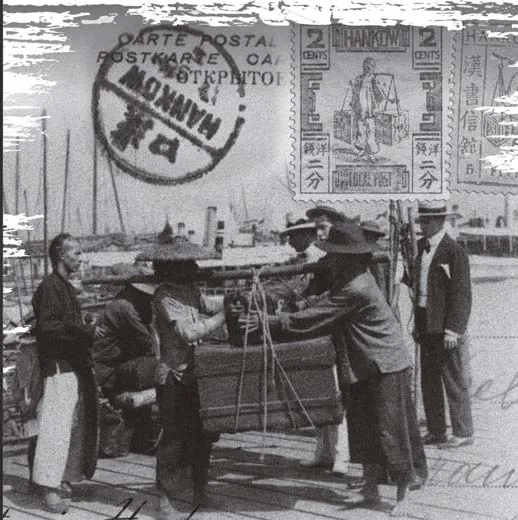
▲1893年武漢發行了歷史上第一套郵票,名稱為《擔茶人》Polebearers carrying tea cases at the Hankou port depicted in the first set of stamps issued by the Wuhan Government in 1893
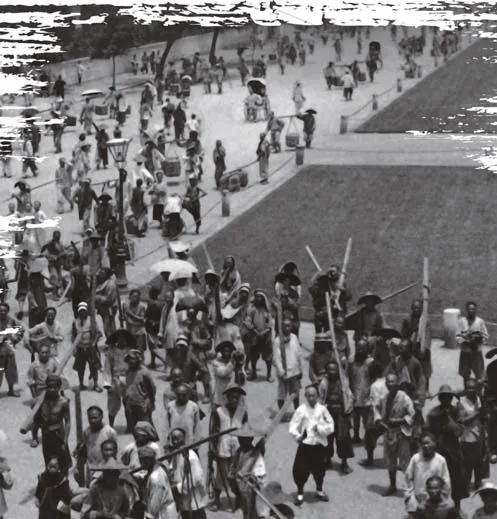
▲百里港口繁榮景,十里江灘忙碌地The flourishing port of Hankou
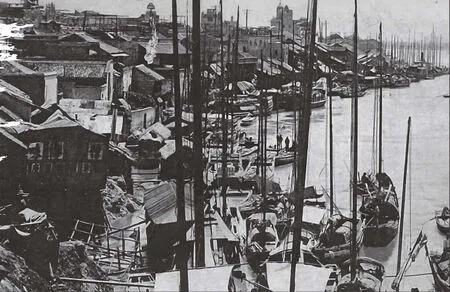
▲天下茶葉聚漢口,船舶江上梔如林 Hankou, the distribution center of Chinese tea
晚清時期,漢口因經濟貿易發達被外國人艷稱為“東方芝加哥”,而在其眾多貿易中,茶葉占據了重要地位。當時,天下茶船齊匯漢口港,江面停泊的茶船多時達兩萬五千只,蔚為壯觀。
武漢市社會科學院但瑞華在所著文章《俄羅商風云錄》中寫道:“不論是從鄱陽湖逆流而上的茶船,還是由黃蓋湖順水而來的磚茶,最終都指向一個目標,那就是漢口碼頭。”
茶到漢口盛,漢口因茶興。1861年漢口開埠后,國外商人進入這個中國深處、長江最上端的港口,從此商貿繁盛,這種景象一直持續到20世紀初。有學者考證:絲、茶是中國對外出口的傳統大宗商品,多以廣州為輸出港口。令人驚嘆的是,漢口在辟為通商口岸的第二年,就在茶葉出口方面把廣州拋在了后頭,一躍成為中國最大的茶葉出口基地。
據資料顯示,1861年由漢口港出口的茶葉達8萬擔,1862年為21.6萬擔,以后逐年增加;從1871年至1890年,每年出口茶葉均達到200萬擔以上。在這一時期,中國出口的茶葉壟斷了世界茶葉市場的86%,而由漢口輸出的茶葉則占國內茶葉出口總量的60%,年輸出總值200余萬兩白銀。
穿梭往來的運茶船隊出入漢口港,漢口成為全國最大的國際性茶葉交易市場,被歐洲人稱為“茶葉港”。漢口“天下茶倉”的地位由此確立。
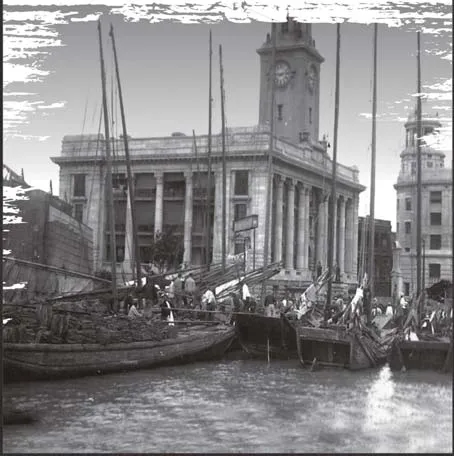
In the late Qing Dynasty, owing to Hankou’s developed economy and trade, the city was christened the “Chicago of the Orient” by foreigners, and tea held a prominent position in its multifarious modalities. Every tea-toting vessel of the time converged on the port of Hankou, where the river was sometimes overflowing with more than twenty-five thousand tea ships all anchored into one tight port. It must have been a splendid spectacle for the eye to behold.
In an article entitled, “The Russo Trade Memoir,”Dan Ruihua of Wuhan Academy of Social Sciences wrote, “Regardless of whether the tea boat came chugging its way upstream from the Poyang Lake, or meandered its way over from Huanggai Lake, their ultimate goal, was always the same: to dock at Hankou.”
Teas a plenty were shipped to the Hankou docks, while tea ships tote riches to Hankou in flocks. After the ports at Hankou were opened in 1861, throngs of foreign businessmen pushed into the very depths of China, to the ports at the upper extremity of the Yangtze River, and from there trade and commerce flourished. Such a dizzying scenario continued on until the early 20th century. Scholars have noted that silks and teas were staples of China’s traditional commodity exports, which were mostly shipped out from the port at Guangzhou. But what is truly astonishing is, that in just the second year after the port of Hankou was opened to trade, its tea exports left Guangzhou in the dust, and in one quantum leap it became China’s largest tea export base.
Statistics show that in the year 1861, four million kilograms of tea were shipped out of the Hankou port, but just one year later, in 1862 tea exports totaled over ten million kilograms, and the number gradually increased year after year; from 1871 to 1890, annual tea export topped one hundred million kilos. During this age, China monopolized the world tea market with an 86% market share, while tea exports from Hankou accounting for 60% of total domestic tea exports, with a monetary value of over two million silver taels.
The shuttles came and went, transporting teas in large fleets from the port of Hankou, while the city became the country’s largest international tea market, with the Europeans dubbing it “the tea port.” Hankou’s status as “the world’s tea storehouse” was established.
漢口并非茶葉產區,緣何能成為天下茶倉?據湖北省社會科學院專家袁北星考證分析:中國是茶葉的原產國,長江流域的湖南、湖北、安徽、江西、浙江、福建等地是中國名茶的主要產地,漢口正處于這些茶葉產區的中心地帶,且擁有兩江交匯、九省通衢的優越地理位置,因此“湖南茶溯湘江、沅江、澧水,陜甘茶循漢水,江西寧州茶及安徽祁門茶溯江而上,四川茶順江而下,麇集于漢口”。
1861年漢口開埠后,中西互貿頻繁,茶葉為西方人喜好,成為出口大宗商品,尤其是質優紅茶,大量出口美、俄、英、法、德、意等國,漢口更加成為中國茶葉最大的集散地。
漢口的茶在歷史上究竟有多輝煌?民國《夏口縣志》有濃墨重彩的記載:1915年的巴拿馬萬國博覽會上,漢口茶商取得驕人成績,漢口工商業共捧回20個一等金牌獎,茶商就占據18席;在8個二等獎中,茶商也占據半壁江山。

▲壯觀的漢口茶港 The magnificent Hankou Port, overflowing with tea ships
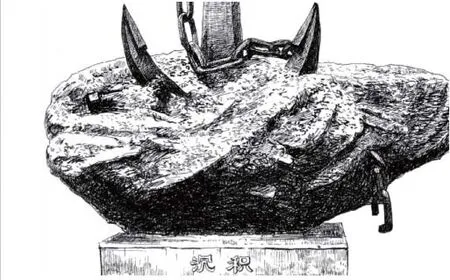
▲沿江大道上的城雕,文化沉淀City statue in Riverside Avenue, “deposit” of port culture in Hankou
Hankou was never an actual tea-producing area, so what empowered it to become the world’s great tea storehouse? According to Hubei Academy of Social Sciences researcher Yuan Beixing’s analysis, China is the original tea-producing region, and the areas near the Yangtze River like Hunan, Hubei, Anhui, Jiangxi, Zhejiang, Fujian are the epicenters of Chinese tea production. Hankou is situated directly in the middle of this vast geographical thoroughfare, right at the intersection of two rivers and nine provinces. Therefore, “Hunan tea comes from down the Xiang River, the Yuan River or the Lishui River; Shaanxi and Gansu tea comes from ships following the Han River; Jiangxi Ningzhou tea and Anhui Qimen tea comes from shipping vessels trudging against the current; while Sichuan tea comes in barges being pushed gently along with the currents. All of them were flocking to the same place—Hankou.”
After the opening of the Hankou port in 1861, Chinese and Western trade was frequent, tea was well-liked by Westerners and became a staple of Chinese exports, most especially high-grade black teas. Large quantities were exported to the United States, Russia, Britain, France, Germany, Italy and other countries, while Hankou became an even larger and more prominent distribution center for Chinese tea.
Just how brightly does Hankou tea shine in the annals of history? During the 1915 Panama-Pacific World Exposition, as recorded in Xiakou County Records written during the Republic of China (1912-1949), Hankou tea merchants made remarkable accomplishments; Hankou industry and commerce took a total of 20 first-class gold medals, among which, Hankou tea merchants occupied 18 of the top places, and half of the eight second-class awards as well.
如今,在漢口的老街上,仍能找到當時的繁盛印記——
在鄱陽街與洞庭街的呈40°交匯處,一棟紅色三角形建筑渾然天成,兩翼順著兩條街排開,在交會處形成窄而高聳的轉角、入口、圓頂,像一艘行駛在海面的大船。船頭將街面往兩邊劈開,角尖處,街道朝五個方向呈星狀幅射出去,氣勢磅礴。
這是漢口最早的多層公寓樓。據當地人介紹,原來的屋主人叫巴諾夫,人稱巴公,是俄國貴族、沙皇尼古拉二世的表兄。巴諾夫曾任俄國駐漢口總領事,又是俄商阜昌磚茶廠廠主,為漢口四大俄國茶葉富商之首。他是“中國通”,來漢不久就摸清了三鎮的風土人情,操一口流利漢語。
巴諾夫因為茶葉生意成為漢口最有財勢與聲望的人物,并買下長江邊英人跑馬場的大片土地,成為俄租界內最大的地產擁有者。此后,各國商人紛紛在漢口購置房產。
而在巴諾夫的阜昌磚茶廠建立之前,另一俄商李維諾夫于1863年建立順豐磚茶廠。這是漢口自行發電、擁有當時最新式蒸汽機和各種先進制茶機械的第一家近代工廠,還建起了漢口長江邊上第一座工廠專用碼頭——順豐茶棧碼頭。順豐磚茶廠雇傭的800余工人,構成了武漢第一支產業工人隊伍。
中國茶葉學會常務理事、湖北省茶葉學會副理事長張岳峰介紹,19世紀中期,俄國人來漢口做起了茶葉生意,開啟了漢口作為“茶葉港”長達半個多世紀的“黃金時代”。漢口俄國茶葉貿易公司多達數十家,一時之間,“漢口煙筒林立者,即俄商以機器制茶之屋也”。
隨著“萬里茶道”的繁盛,當時的俄國茶商幾乎操縱了漢口磚茶市場。阜昌、順豐、新泰、源泰四家磚茶廠的老板,被公認為漢口租界最富有的洋人。而以巴公房子為核心的這片區域,成為漢口俄國茶商聚集的“社區”。
隨著十月革命的隆隆炮聲,俄商在漢口的茶葉生意日漸蕭條,順豐和阜昌均在1917年停工,而新泰磚茶廠苦撐十幾年后,也于1932年轉租給英商,俄商獨占漢口茶市的局面從此結束,俄國人也紛紛離開漢口——這個他們曾經實現財富夢想的地方。
遒勁立柱,穿透了百年風霜;逶迤廊檐,抵擋住千里雨雪;斑駁滄桑,掩不住古樸精美;一磚一木,承載了歷史榮辱。
巴公房子、李維諾夫別墅、東正教堂、新泰洋行、阜昌路(今南京路)……19世紀俄國人在漢口留下的遺存幾乎都與茶商有關。
雖然很多建筑已經有了歲月斑駁的痕跡,我們仍能從這些地名和老宅之上尋覓到當年老漢口繁華的蹤跡,追尋當年漢口茶港的輝煌年代。它們目睹了政權的更迭,經歷了繁盛和破落,成為當年漢口大茶倉的見證者。
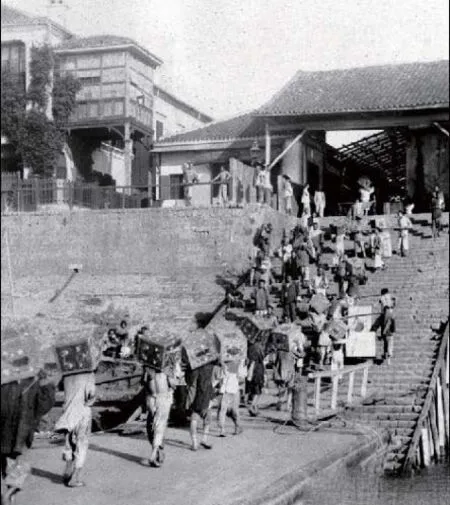
▼苦力在碼頭搬運茶葉Workers carrying tea to the port of Hankou
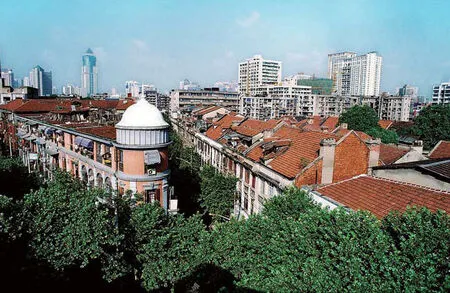
▼巴公房子現狀(圖1、2、4)View of Duke Baranov’s house (photos 1, 2 and 4)

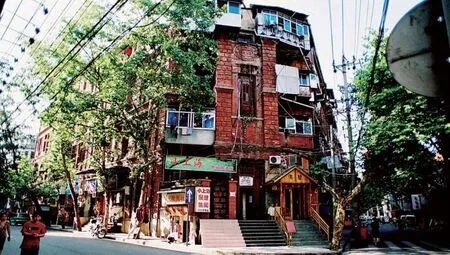
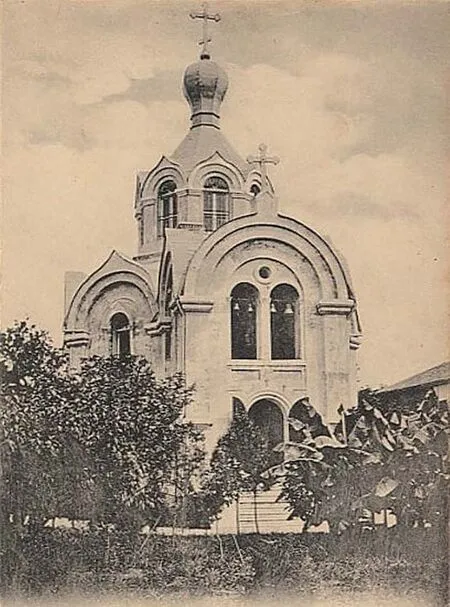
▲東正教堂 Russian Orthodox Church
Even today in the old-town part of Hankou, one is still able to unearth the signs and vestiges of the prosperity of that era—at the 40 ° intersection of Boyang Street and Dongting Street, a work of art in the form of a red triangle building with a great wingspan that enfolds both sides of the street, forming a narrow but lofty nook where there is an entrance and a dome, like a giant sea-barge cutting through the frothy waves. The bow of this great ship splits the side street in two, the corner is acute and juts out in five directions like a star, shooting out its shafts of light and cutting a grand and magnificent form out of the sky.
This stately construction is the earliest multistorey apartment building in Hankou. According to the locals, the original owner of the house was a man named Baranov, who was known as Duke Baranov, due to the fact that he was a member of the Russian aristocracy and cousin of Tsar Nicholas II. Baranov served as Russian Consul General in Hankou, but he was also a Russian businessman and owner of the Fuchang Brick Tea Factory and was the foremost of the four wealthiest Russian tea merchants in Hankou. He was a “Sinologue” who had felt out the local customs and culture soon after arriving in Hankou— and he dazzled the locals with his fluent Chinese.
Baranov became the most well-heeled and prestigious figure in Hankou due to the flourishing tea business and he bought large tracts of land next to the Yangtze River that had been a British racecourse, becoming the largest and most powerful real estate owner in the Russian settlement. After that, businessmen flocked to the city in droves to buy property in Hankou.
Before the establishment of Baranov’s Fuchang Brick Tea Factory, there was another Russian businessman—this one called Litvinov—who established the Shunfeng Brick Tea Factory in 1863. This was Hankou’s very first modern factory with self-generating power, the latest steam engine and a variety of advanced tea-making equipment. He also commissioned the construction of Hankou’s first dock that was dedicated for use by a factory along the edge of the Yangtze River—Shunfeng Tea Storehouse Dock. Shunfeng Brick Tea Factory employed more than 800 workers, who constituted the first team of industrial workers in Wuhan.
Zhang Yuefeng, vice chairman of China Tea Research Society and vice president of Hubei Tea Society said that, in the middle of the 19th century, the Russians came to Hankou to start tea business and started Hankou’s “tea port”that ushered in the “golden age” that lasted for more than half a century. There were dozens of Hankou Russian tea trading companies, and for a period of time, “Mechanized Russian tea factories can easily be identified just by spotting the clusters of smokestacks in Hankou.”
With the prosperity of the Tea Road, the Russian tea merchants at that time nearly monopolized the Hankou brick tea market. The owners of the four major brick tea factories, namely Fuchang, Shunfeng, Xintai and Yuantai, were recognized as the wealthiest foreign businessmen in the Hankou settlement. And this area, which is centered on Duke Baranov’s mansion, became the “hub” for Russian tea merchants in Hankou.
With the rumbling cannon and gunfire of the October Revolution, business prospects became increasingly bleak for the Russian businessmen in Hankou tea industry. Shunfeng and Fuchang suspended operations in 1917, and Xintai Brick Tea Factory, after struggling for ten more years, was sublet to a British business in 1932.Russian business interests in the Hankou tea market came to an end. The Russians themselves were also forced to leave Hankou, the place where they had once made their dreams of wealth come true.
Powerful pillars set deep into the ground, through a hundred years of wind and frost they remain sound; a long winding passage, resists a thousand storms’ pound; even if flecked and paled by vicissitudes of life, the elegance of the fief cannot be obscured; every brick, every tree, carries on the glory throughout history.
The Baranov Mansion, the Litvinov Villa, the Russian Orthodox Church, Xintai, Fuchang Road (now Nanjing Road) ... the remnants left behind by the Russians who come to Hankou in the 19th century in hot pursuit of fortune almost all have something to do with tea.
Although many buildings are now flecked with the traces of years, we can still glimpse the old from these lists of names of the usual suspects, and on these weathered buildings of old downtown Hankou, the traces of the years of the pursuit of the riches and glory of the Hankou tea port still remains visible. These historical structures have witnessed the political regime change, experienced equal shares of prosperity and poverty, and have thus become the greatest witnesses, bearing testimony of the epoch of the great Hankou tea storehouses.
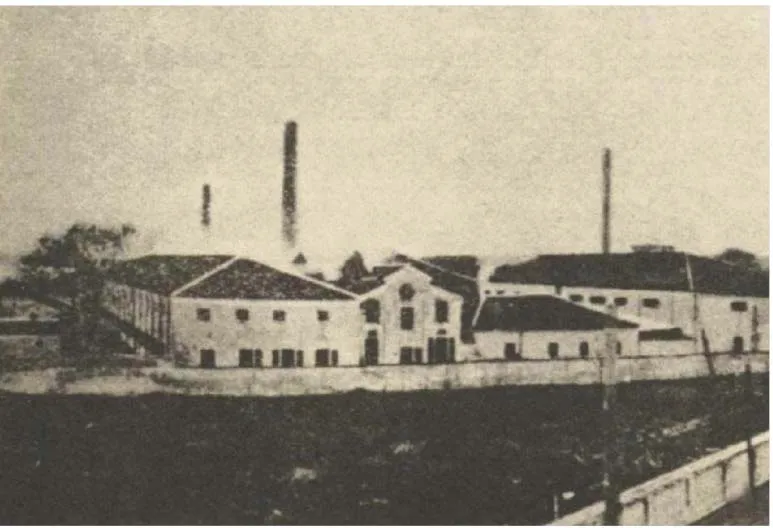
▲漢口順豐磚茶廠 Shunfeng Brick Tea Factory in Hankou

▲工人在磚茶廠制茶 Workers processing tea in the factory

